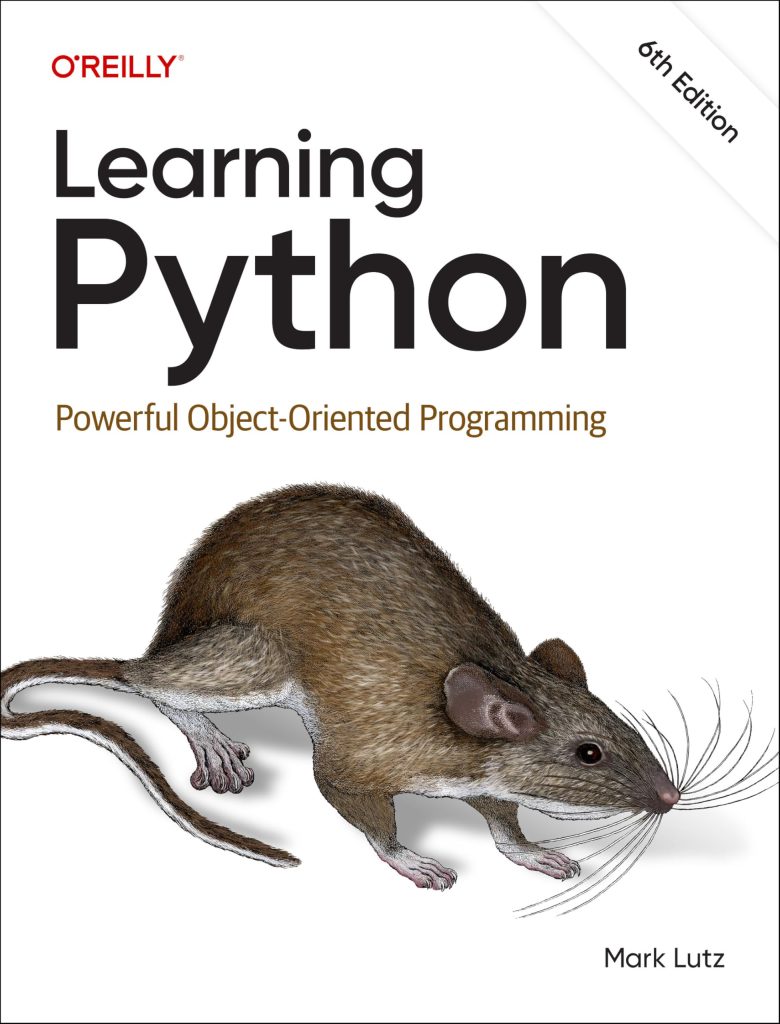
Sparse linear algebra is a branch of mathematics that deals with matrices and vectors containing mostly zero elements. In many scientific and engineering applications, such as network analysis, image processing, and finite element methods, sparse matrices are common and can significantly reduce memory usage and computational complexity when handled properly.
The scipy.sparse.linalg module in SciPy provides a collection of tools and algorithms specifically designed for working with sparse matrices efficiently. This module builds upon the sparse matrix representations available in scipy.sparse and offers various operations and solvers optimized for sparse linear algebra problems.
Some key advantages of using sparse linear algebra include:
- Only non-zero elements are stored, saving significant memory for large, sparse matrices.
- Algorithms can skip operations involving zero elements, leading to improved performance.
- Sparse methods can handle much larger problems than dense linear algebra approaches.
To illustrate the idea of sparsity, ponder the following example:
import numpy as np
import scipy.sparse as sparse
# Create a sparse matrix
dense_matrix = np.array([
[1, 0, 0, 2],
[0, 3, 0, 0],
[0, 0, 4, 0],
[5, 0, 0, 6]
])
sparse_matrix = sparse.csr_matrix(dense_matrix)
print("Dense matrix shape:", dense_matrix.shape)
print("Dense matrix memory usage:", dense_matrix.nbytes, "bytes")
print("Sparse matrix memory usage:", sparse_matrix.data.nbytes + sparse_matrix.indptr.nbytes + sparse_matrix.indices.nbytes, "bytes")
print("Sparsity:", 1 - sparse_matrix.nnz / (sparse_matrix.shape[0] * sparse_matrix.shape[1]))
In this example, we create a small 4×4 matrix with 50% sparsity (half of the elements are zero). The sparse representation uses significantly less memory compared to the dense representation, especially for larger matrices with higher sparsity.
The scipy.sparse.linalg module provides various functions and classes for working with sparse matrices, including:
- Linear system solvers (e.g.,
spsolve,bicg,gmres) - Eigenvalue problem solvers (e.g.,
eigs,svds) - Matrix operations (e.g.,
inv,expm) - Iterative methods for large-scale problems
These tools enable efficient handling of sparse linear algebra problems, making it possible to solve large-scale problems that would be impractical or impossible to tackle using dense linear algebra techniques.
Creating Sparse Matrices in SciPy
SciPy provides several ways to create sparse matrices, each tailored to different use cases and matrix structures. The most common sparse matrix formats in SciPy are Compressed Sparse Row (CSR), Compressed Sparse Column (CSC), and Coordinate (COO) format. Let’s explore how to create sparse matrices using these formats.
1. Compressed Sparse Row (CSR) format
CSR is one of the most commonly used formats for sparse matrices. It is efficient for arithmetic operations and row slicing.
import numpy as np
from scipy.sparse import csr_matrix
# Create a CSR matrix from a dense matrix
dense_matrix = np.array([[1, 0, 0], [0, 2, 3], [4, 0, 5]])
csr_mat = csr_matrix(dense_matrix)
print(csr_mat)
print("Shape:", csr_mat.shape)
print("Non-zero elements:", csr_mat.nnz)
2. Compressed Sparse Column (CSC) format
CSC is similar to CSR but stores data column-wise. It’s efficient for column slicing and matrix-vector products.
from scipy.sparse import csc_matrix
# Create a CSC matrix from a dense matrix
csc_mat = csc_matrix(dense_matrix)
print(csc_mat)
print("Shape:", csc_mat.shape)
print("Non-zero elements:", csc_mat.nnz)
3. Coordinate (COO) format
COO format is efficient for incrementally constructing a sparse matrix and for converting between different sparse formats.
from scipy.sparse import coo_matrix
# Create a COO matrix from coordinates and values
row = np.array([0, 1, 1, 2, 2])
col = np.array([0, 1, 2, 0, 2])
data = np.array([1, 2, 3, 4, 5])
coo_mat = coo_matrix((data, (row, col)), shape=(3, 3))
print(coo_mat)
print("Shape:", coo_mat.shape)
print("Non-zero elements:", coo_mat.nnz)
4. Creating sparse matrices from dictionaries
You can also create sparse matrices from dictionaries, which can be useful when working with graph-like structures.
from scipy.sparse import dok_matrix
# Create a DOK (Dictionary of Keys) matrix
dok_mat = dok_matrix((3, 3))
dok_mat[0, 0] = 1
dok_mat[1, 1] = 2
dok_mat[1, 2] = 3
dok_mat[2, 0] = 4
dok_mat[2, 2] = 5
print(dok_mat)
print("Shape:", dok_mat.shape)
print("Non-zero elements:", dok_mat.nnz)
5. Converting between sparse formats
SciPy makes it easy to convert between different sparse matrix formats:
# Convert COO to CSR
csr_from_coo = coo_mat.tocsr()
# Convert CSR to CSC
csc_from_csr = csr_mat.tocsc()
# Convert DOK to COO
coo_from_dok = dok_mat.tocoo()
print("CSR from COO:n", csr_from_coo)
print("CSC from CSR:n", csc_from_csr)
print("COO from DOK:n", coo_from_dok)
6. Creating sparse matrices with specific patterns
SciPy provides functions to create sparse matrices with specific patterns, such as diagonal or random matrices:
from scipy.sparse import diags, random
# Create a sparse diagonal matrix
diag_mat = diags([1, 2, 3], [0], shape=(3, 3))
# Create a random sparse matrix
random_mat = random(3, 3, density=0.5, format='csr')
print("Diagonal matrix:n", diag_mat.toarray())
print("Random matrix:n", random_mat.toarray())
These methods for creating sparse matrices in SciPy provide flexibility in handling various types of sparse data structures. Choosing the appropriate format depends on your specific use case and the operations you plan to perform on the matrices.
Solving Sparse Linear Systems
Solving sparse linear systems is an important task in many scientific and engineering applications. The scipy.sparse.linalg module provides several methods for solving sparse linear systems of the form Ax = b, where A is a sparse matrix, and x and b are vectors. Let’s explore some of the most commonly used solvers:
1. Direct Solver: spsolve
For small to medium-sized sparse systems, the spsolve function provides a direct solver that can be very efficient:
import numpy as np
from scipy.sparse import csr_matrix
from scipy.sparse.linalg import spsolve
# Create a sparse matrix A
A = csr_matrix([[1, 2, 0], [0, 3, 4], [5, 6, 0]])
# Create the right-hand side vector b
b = np.array([8, 18, 23])
# Solve the system Ax = b
x = spsolve(A, b)
print("Solution x:", x)
print("Verification A*x:", A.dot(x))
2. Iterative Solvers
For larger systems, iterative solvers can be more efficient. SciPy provides several iterative methods:
- Conjugate Gradient method (for symmetric, positive definite matrices)
- Bi-Conjugate Gradient method
- Bi-Conjugate Gradient Stabilized method
- Generalized Minimal Residual method
- GMRES with adaptive inner iterations
Here’s an example using the Conjugate Gradient method:
from scipy.sparse.linalg import cg
# Ensure A is symmetric positive definite for this example
A = csr_matrix([[4, 1, 0], [1, 3, 1], [0, 1, 2]])
b = np.array([1, 2, 3])
# Solve using Conjugate Gradient
x, info = cg(A, b)
print("Solution x:", x)
print("Convergence info:", info)
print("Verification A*x:", A.dot(x))
3. Preconditioning
For ill-conditioned systems, preconditioning can significantly improve the convergence of iterative methods. SciPy provides several preconditioners, such as spilu (Incomplete LU factorization):
from scipy.sparse.linalg import spilu, LinearOperator, gmres
# Create a preconditioner
M = spilu(A)
# Define preconditioner as a LinearOperator
M_x = lambda x: M.solve(x)
precond = LinearOperator(A.shape, M_x)
# Solve using GMRES with preconditioning
x, info = gmres(A, b, M=precond)
print("Solution x:", x)
print("Convergence info:", info)
print("Verification A*x:", A.dot(x))
4. Least Squares Problems
For overdetermined systems (more equations than unknowns), you can use lsqr or lsmr to solve the least squares problem:
from scipy.sparse.linalg import lsqr
# Create an overdetermined system
A = csr_matrix([[1, 2], [3, 4], [5, 6]])
b = np.array([8, 18, 28])
# Solve using LSQR
x, istop, itn, r1norm = lsqr(A, b)[:4]
print("Solution x:", x)
print("Iteration count:", itn)
print("Residual norm:", r1norm)
5. Handling Large-Scale Systems
For very large systems, you might need to use out-of-core solvers or distributed computing libraries. While scipy.sparse.linalg doesn’t directly support these, you can use it in combination with other libraries like Dask or PETSc for large-scale problems.
When solving sparse linear systems, think the following tips:
- Choose the appropriate solver based on your matrix properties (symmetry, positive definiteness, etc.) and problem size.
- Use preconditioning for ill-conditioned systems to improve convergence.
- Monitor the convergence of iterative solvers and adjust parameters if necessary.
- For very large systems, ponder using specialized libraries or distributed computing frameworks.
Eigenvalue Problems with Sparse Matrices
Eigenvalue problems are essential in many scientific and engineering applications, such as vibration analysis, quantum mechanics, and data compression. The scipy.sparse.linalg module provides efficient methods for solving eigenvalue problems with sparse matrices. Let’s explore some of the key functions and their usage.
1. eigs: Compute a few eigenvalues and eigenvectors
The eigs function is used to compute a subset of eigenvalues and eigenvectors for general or symmetric sparse matrices. It is particularly useful when you only need a few eigenvalues/eigenvectors of a large sparse matrix.
import numpy as np
from scipy.sparse import random
from scipy.sparse.linalg import eigs
# Create a random sparse matrix
n = 1000
A = random(n, n, density=0.01, format='csr')
A = A + A.T # Make it symmetric
# Compute the 5 largest eigenvalues and corresponding eigenvectors
k = 5
eigenvalues, eigenvectors = eigs(A, k=k, which='LM')
print("Eigenvalues:", eigenvalues)
print("Shape of eigenvectors:", eigenvectors.shape)
# Verify the results
for i in range(k):
print(f"Residual for eigenpair {i}: {np.linalg.norm(A.dot(eigenvectors[:, i]) - eigenvalues[i] * eigenvectors[:, i])}")
2. eigsh: Compute eigenvalues and eigenvectors of symmetric matrices
For symmetric matrices, the eigsh function is more efficient and should be used instead of eigs:
from scipy.sparse.linalg import eigsh
# Compute the 5 smallest eigenvalues and corresponding eigenvectors
k = 5
eigenvalues, eigenvectors = eigsh(A, k=k, which='SM')
print("Eigenvalues:", eigenvalues)
print("Shape of eigenvectors:", eigenvectors.shape)
# Verify the results
for i in range(k):
print(f"Residual for eigenpair {i}: {np.linalg.norm(A.dot(eigenvectors[:, i]) - eigenvalues[i] * eigenvectors[:, i])}")
3. svds: Compute singular value decomposition
The svds function computes the partial singular value decomposition of a sparse matrix, which is useful for dimensionality reduction and matrix compression:
from scipy.sparse.linalg import svds
# Create a rectangular sparse matrix
m, n = 1000, 800
B = random(m, n, density=0.01, format='csr')
# Compute the 5 largest singular values and corresponding singular vectors
k = 5
u, s, vt = svds(B, k=k)
print("Singular values:", s)
print("Shape of left singular vectors:", u.shape)
print("Shape of right singular vectors:", vt.shape)
# Verify the results
B_approx = u @ np.diag(s) @ vt
print("Frobenius norm of the difference:", np.linalg.norm(B.toarray() - B_approx, 'fro'))
4. Handling large-scale eigenvalue problems
For very large sparse matrices, ponder the following tips:
from scipy.sparse.linalg import splu
# Compute eigenvalues near sigma
sigma = 1.0
k = 5
lu = splu(A - sigma * sparse.eye(n))
eigenvalues, eigenvectors = eigs(A, k=k, sigma=sigma, OPinv=lu.solve)
print("Eigenvalues:", eigenvalues)
from scipy.sparse.linalg import LinearOperator
M = splu(A)
M_op = LinearOperator(A.shape, M.solve)
eigenvalues, eigenvectors = eigs(A, k=k, M=M_op)
print("Eigenvalues:", eigenvalues)
- Think using specialized libraries for extremely large problems, such as SLEPc or ARPACK++.
5. Choosing appropriate parameters
When using eigs, eigsh, or svds, consider the following parameters:
- Number of eigenvalues/singular values to compute
- Which eigenvalues/singular values to find (e.g., ‘LM’ for largest magnitude, ‘SM’ for smallest magnitude)
- Maximum number of iterations
- Tolerance for convergence
eigenvalues, eigenvectors = eigs(A, k=10, which='LM', maxiter=1000, tol=1e-6)
By using these functions and techniques, you can efficiently solve eigenvalue problems with sparse matrices, enabling the analysis of large-scale systems in various scientific and engineering applications.
Iterative Methods for Sparse Linear Algebra
Iterative methods are crucial for solving large sparse linear systems efficiently. The scipy.sparse.linalg module offers several iterative solvers that are particularly useful for sparse matrices. Let’s explore some of these methods and their applications.
1. Conjugate Gradient (CG) Method
The Conjugate Gradient method is suitable for symmetric, positive-definite matrices. It is often used in optimization problems and finite element analysis.
import numpy as np
from scipy.sparse import csr_matrix
from scipy.sparse.linalg import cg
# Create a symmetric positive-definite sparse matrix
A = csr_matrix([[4, 1, 0], [1, 3, 1], [0, 1, 2]])
b = np.array([1, 2, 3])
# Solve using Conjugate Gradient
x, info = cg(A, b)
print("Solution:", x)
print("Convergence info:", info)
2. Bi-Conjugate Gradient Stabilized (BiCGSTAB) Method
BiCGSTAB is suitable for non-symmetric matrices and often converges faster than the regular Bi-Conjugate Gradient method.
from scipy.sparse.linalg import bicgstab
# Create a non-symmetric sparse matrix
A = csr_matrix([[1, 2, 0], [0, 3, 4], [5, 6, 0]])
b = np.array([8, 18, 23])
# Solve using BiCGSTAB
x, info = bicgstab(A, b)
print("Solution:", x)
print("Convergence info:", info)
3. Generalized Minimal Residual (GMRES) Method
GMRES is a popular method for solving non-symmetric systems and is known for its robust convergence properties.
from scipy.sparse.linalg import gmres
# Solve using GMRES
x, info = gmres(A, b)
print("Solution:", x)
print("Convergence info:", info)
4. Preconditioning
Preconditioning can significantly improve the convergence of iterative methods, especially for ill-conditioned systems. Here’s an example using Incomplete LU factorization as a preconditioner:
from scipy.sparse.linalg import spilu, LinearOperator
# Create a preconditioner
M = spilu(A)
# Define preconditioner as a LinearOperator
M_x = lambda x: M.solve(x)
precond = LinearOperator(A.shape, M_x)
# Solve using GMRES with preconditioning
x, info = gmres(A, b, M=precond)
print("Solution:", x)
print("Convergence info:", info)
5. Krylov Subspace Methods
Many iterative methods in scipy.sparse.linalg are Krylov subspace methods. These methods approximate the solution in a subspace spanned by the Krylov sequence. Here’s an example using the MINRES method:
from scipy.sparse.linalg import minres
# Solve using MINRES (suitable for symmetric matrices)
x, info = minres(A, b)
print("Solution:", x)
print("Convergence info:", info)
6. Iterative Refinement
For improved accuracy, you can use iterative refinement after an initial solution:
def iterative_refinement(A, b, x, max_iterations=5):
for _ in range(max_iterations):
r = b - A @ x
dx, _ = gmres(A, r)
x += dx
return x
# Initial solution
x_initial, _ = gmres(A, b)
# Refined solution
x_refined = iterative_refinement(A, b, x_initial)
print("Refined solution:", x_refined)
print("Residual norm:", np.linalg.norm(b - A @ x_refined))
When working with iterative methods for sparse linear algebra, think the following tips:
- Choose the appropriate method based on your matrix properties (symmetry, positive definiteness, etc.).
- Monitor convergence and adjust parameters like tolerance and maximum iterations as needed.
- Use preconditioning for ill-conditioned systems to improve convergence rates.
- For very large systems, ponder using out-of-core solvers or distributed computing frameworks.
- Experiment with different methods and preconditioners to find the best combination for your specific problem.
Performance Considerations and Best Practices
1. Choose the Right Sparse Matrix Format
Selecting the appropriate sparse matrix format can significantly impact performance:
- Use CSR (Compressed Sparse Row) for row-wise operations and matrix-vector products.
- Use CSC (Compressed Sparse Column) for column-wise operations.
- Use COO (Coordinate) format for easy construction and conversion.
- Use LIL (List of Lists) for incremental matrix construction.
Example of converting between formats:
import numpy as np
from scipy.sparse import csr_matrix, csc_matrix, coo_matrix
# Create a sparse matrix
data = np.array([1, 2, 3, 4])
row = np.array([0, 0, 1, 2])
col = np.array([0, 2, 1, 2])
coo = coo_matrix((data, (row, col)), shape=(3, 3))
# Convert to CSR and CSC
csr = coo.tocsr()
csc = coo.tocsc()
print("COO format:n", coo)
print("CSR format:n", csr)
print("CSC format:n", csc)
2. Use Specialized Sparse Linear Algebra Functions
Leverage the specialized functions in scipy.sparse.linalg for better performance:
from scipy.sparse.linalg import spsolve, eigs
# Solve a sparse linear system
b = np.array([1, 2, 3])
x = spsolve(csr, b)
# Compute eigenvalues and eigenvectors
eigenvalues, eigenvectors = eigs(csr, k=2)
print("Solution x:", x)
print("Eigenvalues:", eigenvalues)
3. Avoid Dense-Sparse Mixing
Mixing dense and sparse operations can lead to performance degradation. Convert dense arrays to sparse format when necessary:
dense_matrix = np.random.rand(1000, 1000) sparse_matrix = csr_matrix(dense_matrix) # Prefer this: result = sparse_matrix.dot(sparse_matrix) # Instead of this: # result = np.dot(dense_matrix, sparse_matrix.toarray())
4. Use In-Place Operations
In-place operations can save memory and improve performance:
# In-place addition csr += csr # In-place multiplication csr *= 2
5. Leverage Sparsity in Algorithms
Design algorithms that take advantage of sparsity:
def sparse_row_sum(sparse_mat):
return np.array(sparse_mat.sum(axis=1)).flatten()
row_sums = sparse_row_sum(csr)
print("Row sums:", row_sums)
6. Profile and Optimize
Use profiling tools to identify performance bottlenecks:
import cProfile
def performance_critical_function(sparse_mat):
# Your code here
pass
cProfile.run('performance_critical_function(csr)')
7. Think Parallel Processing
For large-scale problems, think using parallel processing libraries like Dask or PySpark:
import dask.array as da dask_sparse = da.from_array(csr, chunks=(1000, 1000)) result = dask_sparse.dot(dask_sparse).compute()
8. Use Appropriate Tolerance and Iteration Limits
Set appropriate tolerance and iteration limits for iterative solvers:
from scipy.sparse.linalg import cg x, info = cg(csr, b, tol=1e-6, maxiter=1000)
9. Preconditioning for Iterative Solvers
Use preconditioning to improve convergence of iterative solvers:
from scipy.sparse.linalg import spilu, LinearOperator M = spilu(csr) M_x = lambda x: M.solve(x) precond = LinearOperator(csr.shape, M_x) x, info = cg(csr, b, M=precond, tol=1e-6, maxiter=1000)
By following these performance considerations and best practices, you can significantly improve the efficiency of your sparse linear algebra computations using scipy.sparse.linalg.






